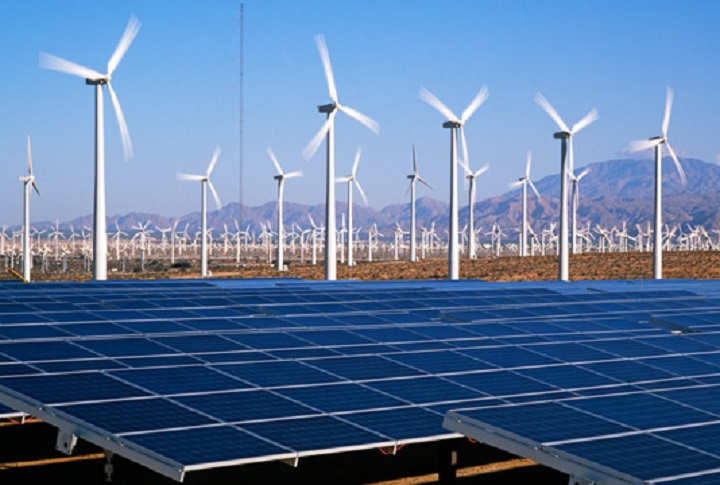Lagos’s main port terminal operator has unveiled a comprehensive transition plan aimed at integrating solar energy across its facilities, signaling a shift toward cleaner, more reliable power sources for cargo operations, warehouses, and administrative centres. The initiative seeks to reduce greenhouse gas emissions, lower electricity costs, and protect terminal operations from disruptions caused by Nigeria’s chronic grid instability. While details on financing and deployment timelines are being finalised, the announcement represents a strategic pivot in how industrial infrastructure engages with the country’s energy challenges.
Company executives outlined that the solar plan will begin with pilot installations of rooftop photovoltaic systems at container handling hubs and administrative offices, supplemented by utility-scale solar farms sited in currently underutilised terminal lands. The design includes battery-based microgrid systems to store surplus generation for use during peak hours and grid outages. In addition to onsite power generation, the operator plans to adopt energy management software to monitor usage, forecast demand, and dynamically optimise solar supply in real time.

The terminal operator noted that power remains the single-largest operating cost, driven by reliance on diesel generators due to irregular grid supply. By shifting to solar, the company expects to reduce annual diesel consumption by 40 to 60 percent, lowering both fuel expenditure and carbon emissions. Besides cost savings, the operator emphasised the potential for enhanced uptime and logistical reliability—critical factors for anchoring port competitiveness and preserving shipping continuity for importers and exporters.
Stakeholders welcomed the solar plan as a timely move, given Nigeria’s frequent outages and escalating energy costs. Port users, including logistics firms and freight forwarders, expressed optimism that more stable power would reduce dwell time, equipment downtime, and surcharges associated with unreliable electricity. Experts also flagged potential spill-over benefits: if successful, this model could be adopted across other ports, free zones, and industrial estates seeking resilient green energy solutions.
Financing arrangements are expected to combine company capital with long-term solar financing structures—such as green bonds, concessional debt, and potential off-taker agreements with solar developers. The firm has said it is in talks with development finance institutions and renewable energy funds to structure cost-efficient investment models while securing technical partnerships for system design and maintenance.
Terminal officials acknowledged challenges typical of solar deployment in the Nigerian industrial context—such as securing sufficient land, ensuring equipment protection, managing integration with diesel backup systems, and projecting returns under unpredictable solar irradiation patterns. To address these, the project includes detailed feasibility studies, soil and weather assessments, and partnerships with certified solar installers and energy auditors to ensure reliability, quality, and optimal sizing.
The operator also committed to workforce education and training programs focused on solar operation, system monitoring, and energy management. Local technicians and operations staff will receive certification on photovoltaic installation, battery upkeep, and grid synchronization techniques. Beyond technical skills, training is also envisaged to extend for security and environmental health protocols around solar infrastructure.
Government agencies have signaled support too. Regulatory bodies such as the Nigerian Ports Authority and the Nigerian Electricity Regulatory Commission are reportedly working with the terminal operator to streamline licensing for captive generation, establish standing delivery tariffs for excess solar power, and ensure compliance with environmental guidelines. Officials cited the initiative as aligned with national climate resilience and industrialisation targets under Nigeria’s “Renewable Energy Policy.”
Analysts argue that the terminal’s solar transition is reflective of broader economic trends. As commercial actors confront high diesel costs, fluctuating grid reliability, and sustainability commitments, energy autonomy via solar becomes increasingly important. Projects like this also send positive investment signals: combining private sector resilience with environmental stewardship and infrastructure reliability.
The terminal operator anticipates that after successful phase one deployment—expected to conclude within 12 months—it will begin expansion into adjacent operations, including cold storage units, truck yards, and ancillary warehousing. Longer-term plans include exploring solar-powered equipment like reach stackers and automated yard vehicles, alongside integrating smart grid components to enable demand response and predictive maintenance.
Ultimately, the solar transition plan positions the Lagos terminal operator not just as a logistics hub, but as a pioneer in green port infrastructure, combining cost efficiency with operational resilience and environmental responsibility. If executed effectively, the initiative could reduce annual power bills, strengthen supply chain reliability, and serve as a replicable blueprint for port modernisation across Nigeria and the wider West African trade corridor.
Support InfoStride News' Credible Journalism: Only credible journalism can guarantee a fair, accountable and transparent society, including democracy and government. It involves a lot of efforts and money. We need your support. Click here to Donate
